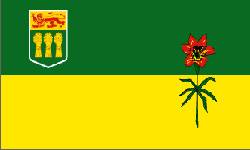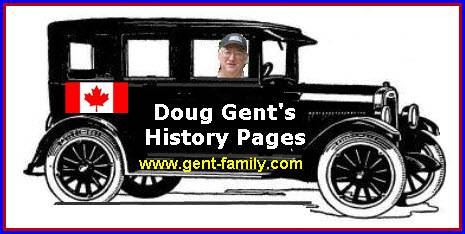NO Reproduction in Whole or in Part,
on ANY, and ALL of my Pages,
Including Text and Pictures,
May be made, without the express Written Permission
of
Web Editor, Doug Gent
© 2016
Want to add a link to my
pages?
see my
Copyright Information
Page
for the only Authorized Picture Link allowed.
All Pictures on all my web pages, are now Visibly Watermarked,
All my pages are now Right Click, copy and paste, disabled.
I ask everyone that enjoys free history sites,
to start policing these violations.
If we don't stop this, no one will donate pictures to me or anyone,
and we all loose.
If you see one of my pictures on facebook, etc.
tell them to remove it.
|
**
WARNING **
Old
Abandoned Underground Coal Mines can be Very Dangerous,
Due to Collapse, and Mine Gases (Noxious and Flammable).
Extreme Care should be taken around them, due to Falls, Sudden Ground
Collapse, and Bad Air,
and in NO Circumstances should People enter into ANY Mine Openings, or
Associated Caves.
The Material Contained on my Sites,
is NOT to Encourage Personal Investigation of these Mines,
But only as a Historical Record of these Long Abandoned Mines.
Please View these Mines from a Far, Safe and Legal Distance.
Always Observe Private Property Rights, and Obey ALL Warning Signs.
************************************************
|
Brand name- M&S - Silkstone
Mined by: Manitoba and Saskatchewan Coal Company
Limited
originally by: Hudson Bay Coal Company
aka: M&S Coal Company Ltd.
aka: M&S
aka: Hudson Bay Mine
Started in
1907

Dec 1933 Map
of the "Big 5" Coal Mines near Bienfait
Located at Sec 10- Tsp 2- Rge 6, West
of the 2nd Meridian
Located 4 miles from Bienfait,
connected with the Souris Branch of the CPR, by a mine spur
Deep Seam, Shaft type Mine
operated from 1907 to 1942.
Switched to strip mining in 1942.
Started in 1907, head office 503 Avenue building, Winnipeg MB
Tipple was near the Briquette Plant.
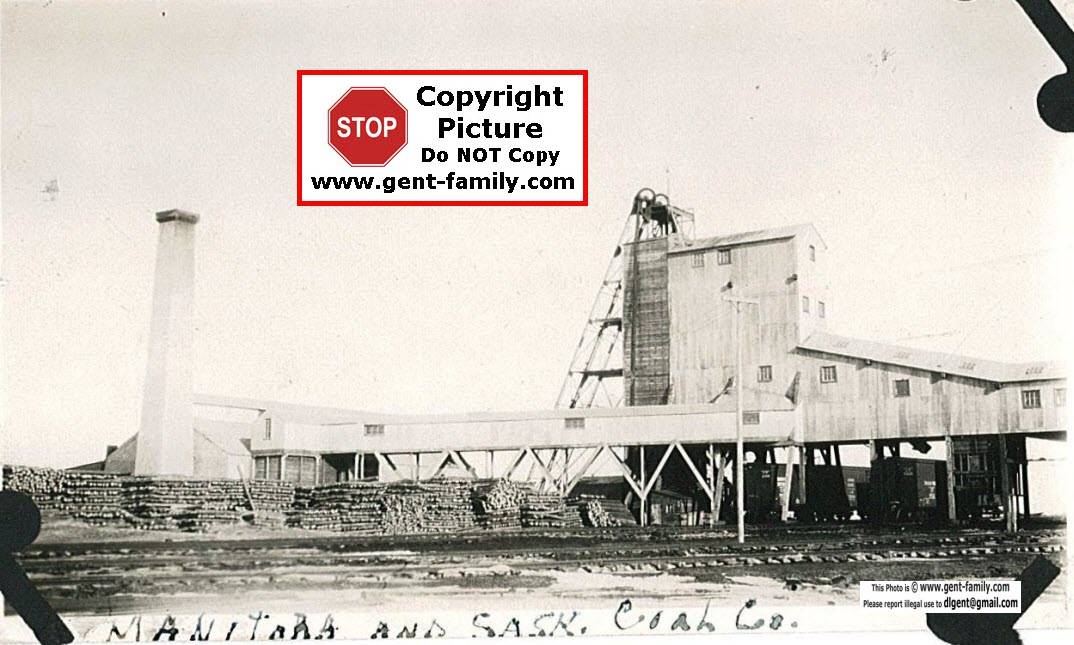
early 1950's? photo from Alex Wilson collection, sent by Margaret Cuddington
Sir Daniel Hunter McMillan
,
Sir William Whyte
and
Senator Robert Watson,
were some of the First Major Shareholders of the
M & S Coal Company Ltd.
Sir Daniel Hunter McMillan, KCMG
b- Jan 14, 1846 in Whitby, Canada West (ON)
d- April 14, 1933, in Winnipeg MB, age 87
Buried in Elmwood Cemetery, Winnipeg
Lived in Winnipeg MB
General Manager of M&S
Sir Daniel Hunter McMillan
web page
Sir William Whyte
b- Sept 15, 1843, in
Charlestown, Fife, Scotland
d- Apr 14, 1914 in San Diego CA. from a painful illness.
buried in St. John's Cemetery, Winnipeg MB
his son William Whyte became President
of M&S
Lived in Winnipeg MB
Sir William Whyte was a close friend of Sir Daniel McMillan
Sir William Whyte
web page
Senator Robert Watson
b- Apr 29, 1853 in Elora, Wellington Co., ON
d- May 19, 1920, at Brandon MB, age 76
lived in Portage La Prairie MB
President of M&S
When Robert Wilson was Minister of Public Works
in the Greenaway Government in MB
Sir Daniel Hunter McMillan was
Provincial Treasurer and Land Commissioner
there you have the connection for the M&S Coal Mine ownership.
Senator Robert Watson web page
Mine Manager, ca 1907, to at
least 1911:
William (Bill) Addie
b- Apr 1866, in Scotland
Immigrated in 1902
Living in Company House #20 in 1911, Presbyterian
married bet July-Sept 1896 in Leicester Reg Dist, Leicester, UK
Wife- Lizzie Addie, nee Munton,
b- Mar 1874, in Leicester, England,
Religion- Anglican
Member of the Order of the Eastern Star in Estevan, ca 1919-20
Lizzie and 2 children immigrated in 1905
3 children:
Mavis Addie
b- July 1897 in
district Abergavenny,
Monmouthshire, Wales
Vera Beatrice Addie-
b- Feb 1900 in
district Abergavenny,
Monmouthshire, Wales,
Vera taught at Lignite School ca 1917
son- Collin Addie- b- 1909 in SK
Mine Foreman in 1911-
George Bruce
b- July 1876 in Scotland
Immigrated in 1907
Living in Company House #19 in 1911
Wife Ada Bruce, nee ?,
b- July 1875 in England
Ada and 2 sons immigrated in 1908
2 sons:
Wilfred Bruce, b- Nov 1903 in England
Kenneth Bruce- b- Aug 1905 in England
Other Mine
Employees in 1911
living in Company Houses
note- some names are very hard to read, and correct spelling is doubtful
Boarding House
Mary Holley, a widow, b- Feb 1854 in Wales
her husband Samuel Holley,
d- Sept 27, 1910, age 48, buried in Taylorton
Cemetery
Mary died Jan 20, 1938, also buried in Taylorton Cemetery
living with daughter- Maud Holley
Boarders:
Mark Binks
Alek Symotuk
John Smart
John Lowey
Cecil Jones
Dill Henderson
Thomas Smyth, wife Beatrice
House #1
Joseph Mould, wife Christina,
children, Dorothy & John
House #2
John Jirves, wife Jennie,
children, Mary, Simon, Fanny, Ellen
House #3
John Lechoicz, wife Annie,
daughter Mary
Fik Szczepan- Boarder
House #4
Terry Howenerzk(sp?)
John Lysze & Alek Lysze, Boarders
House #5
Harry Bozuk, wife Girtie,
children, John, Fred, & Mary
Boarders- Adam Sekowi(sp?), John Wayel(sp?),
Nick Reno, Pete Boruk, Steve Holycsuk
Nick Reno born in Bulgaria, Steam Foreman
House #6
Alex Wrict (sp?), wife Kate,
son Mack or Nock?
John Da??p, brother to Kate?
Steve Czezcweth(sp?), Dan Smaka(sp?), Nick Nemsof(sp?)
House #7
Pete Scknick, wife Annie,
daughter, Annie
Sam Chycuk, Joe Makesky Joe, Frank Dingas (sp?), boarders
House 8
Samuel Holley, wife Amelia,
son William
House 9
Mike Duzmiski, wife Georgina,
daughter Josie, all from Austria
Louis Lubinski- boarder
House #10
James Milne
Andrew Wilkie- boarder, both from Scotland
House #11
Frank Skimisk, wife Jane,
and son, Herbert, brother Nicol
Steve Mulemuka(sp?), boarder
House #12
Peter Powroznik, wife Mary,
daughters, Annie & Stefinia
Peter shown as Mine labourer
House #13
Chas Hewko, d- July 27, 1946,
wife Magdalena (Maggie) Hewko, b- 1885, d- 1918
both buried in Taylorton Cemetery
Living with them, children, Steve & Francis
Steve Muzusy (sp?), boarder
Mr. Hewko was a Track man,
House #14
Nicol Diczanik (sp?)
August Stenik, boarder
House #15
Alex Sorrebko (sp?),
wife Mary,
son Steve
House #16
Nellie D. Hurlbert, nee Poore, a Widow in 1911, b- USA
children, William, Benjiman, Floid (Floyd), Marian (Marion?), b- USA
Edna May, Walter, Gladys Violet b- SK, all near Oxbow
William Hurlbert and Benjiman Hurlbert were miners,
and Floid (Floyd) Hurlbert was a Switchman
Nellie's husband was:
Francis Marion Hurlbert
or Franklin Hurlbert
or Marion Francis Hurlbert,
take your pick!
1904 they were on Section 22- Tsp 4- Rge 2- W2
in Oxbow district
Immigrated in 1902 from USA
1905 census, more children, Elsie, & Lyle
she is shown as a wife, but no husband shown?
House #17
James Alfred Stock,
wife- Rose Emma, nee Fox,
married bet Apr-June 1877, reg dist of Lincoln, in Lincolnshire UK
children, Ernest Stock, Bertram Stock & Maud Hilda Stock
James Alfred Stock was a Blacksmith,
Ernest age 20, miner,
Bertram age 16, mine driver
House #18
Pit Boss- Alexander McGregor- b- Aug 1868, in Scotland
wife Isabella McGregor, nee Cowan, born in Scotland
children: James, Mary, & Annie- born in Scotland
William, Isabella, Maggie Cowan, & Alexander- born in SK
Isabella and Maggie in Roche Percee
James shown as age 16, Mine Driver
House #21
Archie Davidson, b- Feb 1875, in England, Steam Engineer
daughter Elizabeth Davidson, b- Aug 1905 in SK
his wife Nellie Davidson, nee Gilmore
d- Dec 26, 1909, age 26, buried in Taylorton Cemetery
Their son John Burnett b- Nov 7, 1909, d- Aug 17, 1910
Looks like Nellie died from birth complications
In 1907, the United Iron Works Company
of Springfield IL
was installing a complete coal hoisting
and screening plant, of very elaborate design,
including Steel Head Frame,
and High Speed Engines at Bienfait
for Winnipeg Capitalists. guess where?
Jan 1, 1910
Offered 250,000 6% bonds in London England
2 weeks earlier.
The property bonded is 1600 acres
of Coal Land at Bienfait SK.
The Company has been doing business since 1907
Robinson & Black of Winnipeg,
were in charge of the sale.
1912 seam thickness 13 ft horizontal,
average depth of 80 ft.. 2 shafts.
Sept 1914
Financial report for accounts to May 31
showed a loss after meeting fixed charges
and providing for depreciation
of $153,000.00
reducing a credit balance
brought down to $31,492.00
In 1931 the Manager was
Alexander
Craig McMiken (Alec) (Alex) (Happy) Wilson
Part of the Big Six time of Sept 29, 1931 riot
This was the largest of the mines in 1931
James Crawford Thomson
b- Nov 29, 1874 in Collingwood, Simcoe, ON
d- Oct 4, 1938, in Souris Hospital, Souris, RM of Glenwood, MB.
buried in Elmwood Cemetery, Winnipeg MB
Nov 1934 He
was President of the M&S Mine.
Coal sold for about $6.50 a ton in Winnipeg.
He had a son
Crawford McMillan Thomson
b- Jan 11, 1909 at Winnipeg MB
d- 1975
buried in Elmwood Cemetery, Winnipeg MB
June 12, 1947,
He
was the General Manager of M&S
In Jan 1949 Crawford M. Thomson was
publicly blamed by
Premier Tommy Douglas, for prolonging a 10 week strike
of 200 members of the United Mine Workers of America.
In July 1949 Crawford was
General
Manager of M&S
He was arguing in favour of a miner's pension plan
at Regina, at the Provincial Royal Commission on Coal.
the mine owners were paying a 3 cent per ton levy
towards the UMWA Welfare Fund.
In Feb 1960 He
was Vice-President of M&S
Aug 1967 he was shown as Retired
President of M&S
See my
Crawford McMillan Thomson
page for Genealogy and Bio
for this family
1956
President-
William Whyte (see
below**)
Vice-President- William H. Barker
General Manager-
Crawford McMillan Thomson
Head Office, 503 Avenue Building, Winnipeg, Man
they had 115 employees on payroll in 1956
**William
Whyte (Jr)
b- July 17, 1883 in Toronto ON
d- Aug 30, 1960 at Winnipeg MB
buried in St. John's Cemetery, Winnipeg MB
My
William Whyte
web page for Genealogy and Bio
Thomas Wilfred Phillips
b- Sept 2, 1893 in Glouster, Trimble Township, Athens Co., Ohio, USA
d- Mar 9, 1972
buried in Souris Valley Memorial Gardens, Estevan
Father- John Phillips,
b- May 1866 in England,
d- bef 1920
Coal Miner in Ohio in 1900
John Phillips immigrated in 1888 from England to US
Mother- Margaret A. Phillips nee Payne, b- Feb 1869 in England
Grandfather on Father's side, born in Wales
Grandmother on Father's side, born in England
mother of Margaret, Mary A. Payne, b- 1849 in England
Mary was a widow in 1920, living with Margaret Phillips and family
siblings of Thomas Phillips:
John F. Phillips, b- Sept 1885 in England
Mary R. Phillips, b- Nov 1890 in PA, US
Arthur F. Phillips, b- June 1896, in Ohio, US
Lillian I. Phillips, b- Apr 1900 in Ohio, US
William G. Phillips, b- 1903 in Ohio, US
Andrew J. Phillips, b- 1906 in Ohio, US
Benjamin T. Phillips, b- 1910 in Ohio, US
1900 he was in Glouster Village Ohio
1920 he was in Springfield Township, Sangamon, Illinois, US
He
was
General Manager of M&S in 1958,
until he retired Apr. 30, 1966.
Prior to being appointed Mine Manager in 1938 at M&S
he was affiliated with
the Peabody Coal Company of Springfield, Illinois
He was the fellow that was robbed, see story below.
The Manitoba & Saskatchewan Coal
Company Limited,
abbreviated to 'M & S' became the operator
of the Bienfait Mine on February 13, 1907.
The mine was purchased
from the Hudson Bay Coal Company,
who had commenced
operations in 1905.
Later purchased by Luscar.
Per Estevan Mercury, October 5, 1966,
Harry Banks said this about this mine-
M & S Mine was known as the Hudson Bay Mine
in its earlier days of
operation,
sometime about 1905 when Bill Addie was manager.
It became
known as the M & S Mine about 1920
and strip mining started about 15
years ago.
Housing Campsite closed as of June 1967.
It was operating for sure in 1911 and
1917.
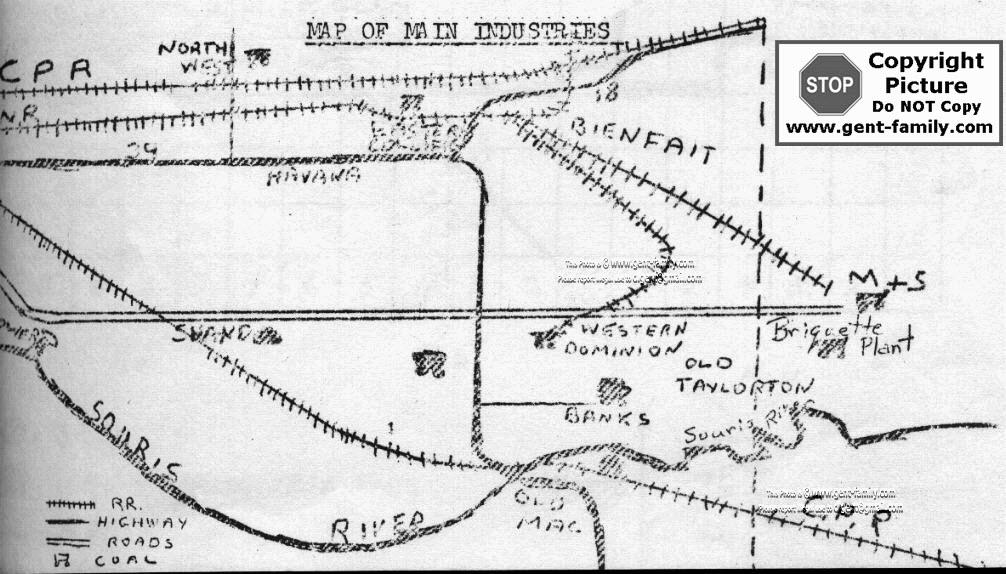
M&S is shown on the right side in this map
They operated their own Rail line and Locomotive
to haul the loaded coal Boxcars to Bienfait

Mar 16, 1908, miners at M&S on Strike
F. H. Sherman is the miners representative
for a Board of Conciliation.


Pictures from Alex Wilson Collection
sent by Margaret Cuddington
Info below from a 1911
Government Coal Report on this mine.
Method of Mining -
The Coal Bed, was about 12 ft. in thickness, and it laid flat,
covered with about 80 ft. of sand, clay and gravel.
A double-compartment vertical shaft had been sunk through the clay
and gravel and the coal was hoisted to the surface
by means of a self-dumping cage.
The method of mining used was called pillar-and-stall.
The mine was laid out with the main entries running North and South
and the side entries East and West.
The width of the entries was 9 ft. and the height 9 ft.
The rooms were driven 15 ft. wide and 9 ft. high.
And the pillars were 54 ft. Square.
The rooms were driven in panels, consisting of 36 pillars,
and as soon as the work had progressed far enough in a panel,
as many of the pillars as possible were removed.
It was found that a greater percentage of the pillars
could be recovered in this way,
If the pillars were attacked as soon as possible
after the rooms had been finished.
If the pillars were allowed to remain for any length of time,
the roof would settle and heavy pressure brought to bear upon them.
Upon attempting to withdraw them,
the roof, coal and hard clay and gravel
over the coal breaks, and caving results.
In this way, not only is a low extraction obtained from these pillars,
but the adjoining ground is disturbed,
thus preventing a high extraction from subsequent pillars.
Where the ground is bad,
the pillars were split by three 8 ft. rooms, leaving 6 ft. pillars.
Extraction-
During the month of May 1911, about 1500 tons of lignite was mined.
The coal was used for domestic and steam purposes.
Although the thickness of the coal was about 20 ft., only 10 ft. was mined.
About 4 ft. of top coal was left to support the roof
and 6 ft. of coal was left in the bottom.
The immediate roof over the coal was a hard boulder clay,
and above this, sand and gravel extended to the surface.
Owing to the bad character of this roof
and to the fact that there was no solid stratum over the coal,
it was necessary to leave in the top coal.
Where larger pillars are left and where the bottom coal
was attacked soon after the opening of a room,
the bottom coal may be recovered,
though, in 1911 practically none had been recovered.
In 1911 the extraction from the mine was about 30 per cent of the total coal
and no pillars had yet been robbed.
Ventilation-
The mine was ventilated by a direct-driven Sterling exhaust fan.
Blasting Methods-
The blasting was done by the miners,
Black Powder and Squib being used.
One pound of powder was used for every 2 tons of coal mined
The powder was charged into the holes in paper cartridges
and clay, dug in the mine, was used for tamping the hole.
No gas was been found in this mine,
and open lamps, burning seal oil, were used by the miners.
Timbering-
The main entries were timbered with round sets,
and in the rooms where the roof was bad,
sets were also employed.
Usually one prop 9 ft. long was used for every ton of coal mined.
Output in 1911-
This mine had the capacity of 1,000 tons per day of 10 hours,
but, during the summer months,
the demand for coal was small, so that the maximum output
was approached only during the autumn and winter months.
In 1910, the output was 60,000 tons,
during the first five months of 1911,
the output amounted to 40,000 tons.
Preparation of the Coal for Market-
Although two sizes, screen and pea coal, were made,
about 60 per cent of the coal sold was shipped as run-of-mine.
The coal was used for domestic and power purposes.
Over 10 per cent of the coal that went to the screens
was too fine to be marketable. (Slack)
It was taken a short distance from the mine,
dumped on the prairie and burned.
During the first four years that this mine had been in operation,
over 12,000 tons of screenings were destroyed in this way.
It was impossible to store this slack coal at the mine,
as it would burn from spontaneous combustion.
Extraction and Waste-
The coal seam averaged 12 ft. in thickness,
but about 9 ft. only was mined,
3 ft. of top coal was left in to support the roof.
The proportion of coal taken out in advance work was about 25 per cent,
and about 60 per cent of the pillars were recovered,
giving a recovery of about 70 per cent, excluding roof coal,
or a recovery of 52.5 per cent, including the roof coal.
Of this, 10 per cent was burned as slack,
leaving a total recovery of marketable coal of a little over 47 per cent.
March 1919 article
on the M&S mine


In 1917 this mine produced 67,809 tons
of coal
2nd highest amount in the district.
Cost to mine in 1917- $1.25 to $1.50 / ton
Oct 1923
4 miles SE of Bienfait
2 shafts have been sunk
85 feet deep to the coal seam which is 11-12 feet deep.
the plant had a capacity of 1,000 tons a day.
the paper described that the Owners of the mines,
have supplied their employees, with all the modern conveniences,
such as electric light, water and sewage.
(how nice of them!)
Oct 8, 1925, Mr. John Felix, Labourer, age 39
was killed underground after a blast that loosened a piece of coal
which fell and hit him on the head.
Coroner P.C. Duncan from Estevan
and Inspector Pierce from Roche Percee
investigated.
wife and family were living in Winnipeg,
Manager John Galloway notified his wife.
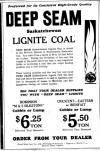
Price of Coal Nov, 1932

M&S Coal Ad
Nov 7, 1940, John Kotlarski, age 31, died from a coal
cave-in at this mine
he served in WWII, serving 11 months.
Daniel Housedoff, age 20, a driver at this mine,
was also at the Bienfait Hospital at this time. He had 6 broken ribs,
as he fell under cars he was driving underground.
in 1944, the Store and Office Buildings
were destroyed by fire.

Jan 29, 1946
M&S tipple burns down, causing $100,000 damage.
More than 100 workers at that time.
Feb 5, 1947, Roy George Smyth, an employee of M&S
was killed that day, age 21, by a loaded coal car.
He was a motorman on an underground electric trolley
used to haul cars to the main shaft to be lifted up to the surface
He served in the Canadian Army in WWII overseas
and was discharged a year earlier, ca 1946
His Father, A. T. Smyth was Pool Elevator Agent at the time
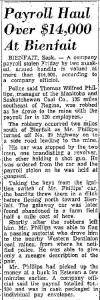
Friday, Mar 14, 1958
The M&S Mine payroll in over $14,000 cash,
was stolen from Mr. Thomas Wilfred Phillips,
Mine Manager. (see bio above)
After this robbery, my 2 brothers witnessed
a car racing north to Bienfait in a cloud of dust,
faster than anything they had seen before,
past our farm, which was on the highway,
1 mile south of Bienfait.
A few minutes later, the police car was heading south
from Bienfait to investigate, missing the thieves by minutes.
They obviously ditched Mr. Phillips car,
and switched to their own.
This car was very noticeable, even in the dust,
No one was ever charged with the robbery.

Newer M&S
Locomotive Pictures
Note- Links below are NOT my sites
Locomotive #6947 used at M&S now at Sandon
BC Railway Museum
http://www.sandonbc.com/railwaytourism.html
In 1959 #6947 was sold to the Manitoba-Saskatchewan Coal Company in Bienfait,
Saskatchewan where it worked hauling coal until 1968 when it finally retired
Locomotive CPR#6166 used at M&S now at
Saskatchewan Western Development Museum in Saskatoon Saskatchewan.
http://members.shaw.ca/cprsteam/cp6166.htm
It was sold by the CPR in July 1947 to the Manitoba and Saskatchewan Coal
company.
It operated near Bienfait, Saskatchewan for almost 20 years until retired
in1967 |

